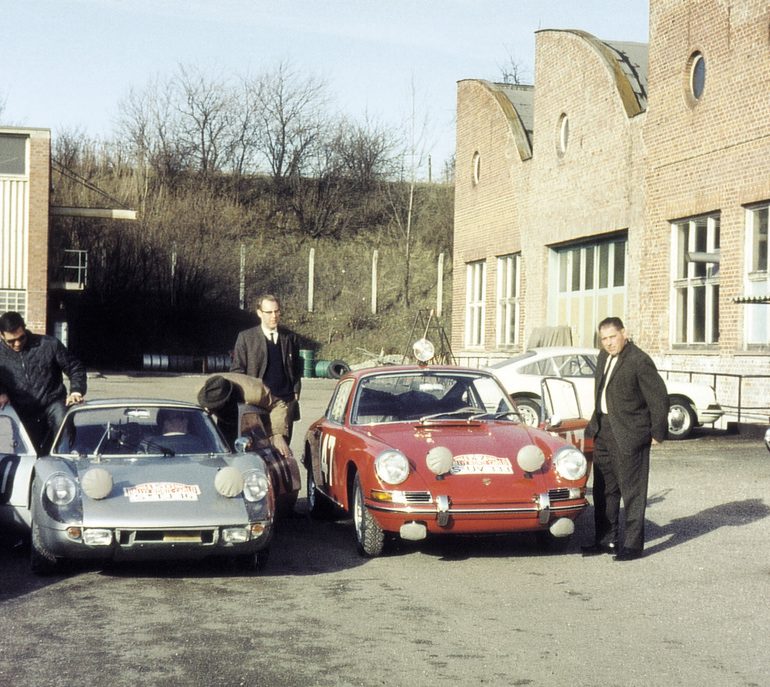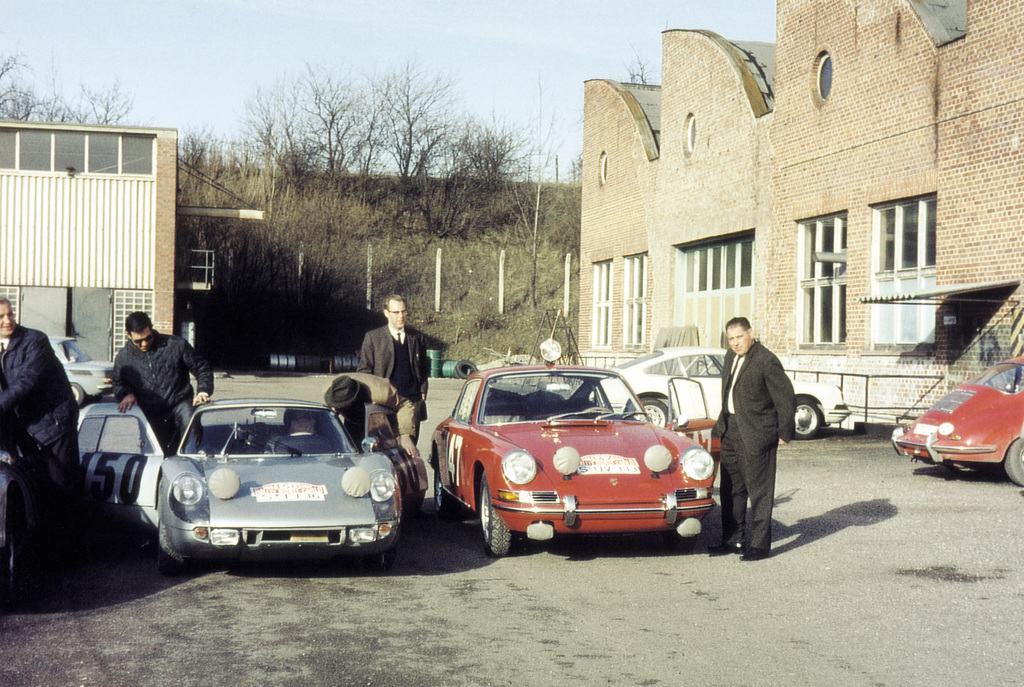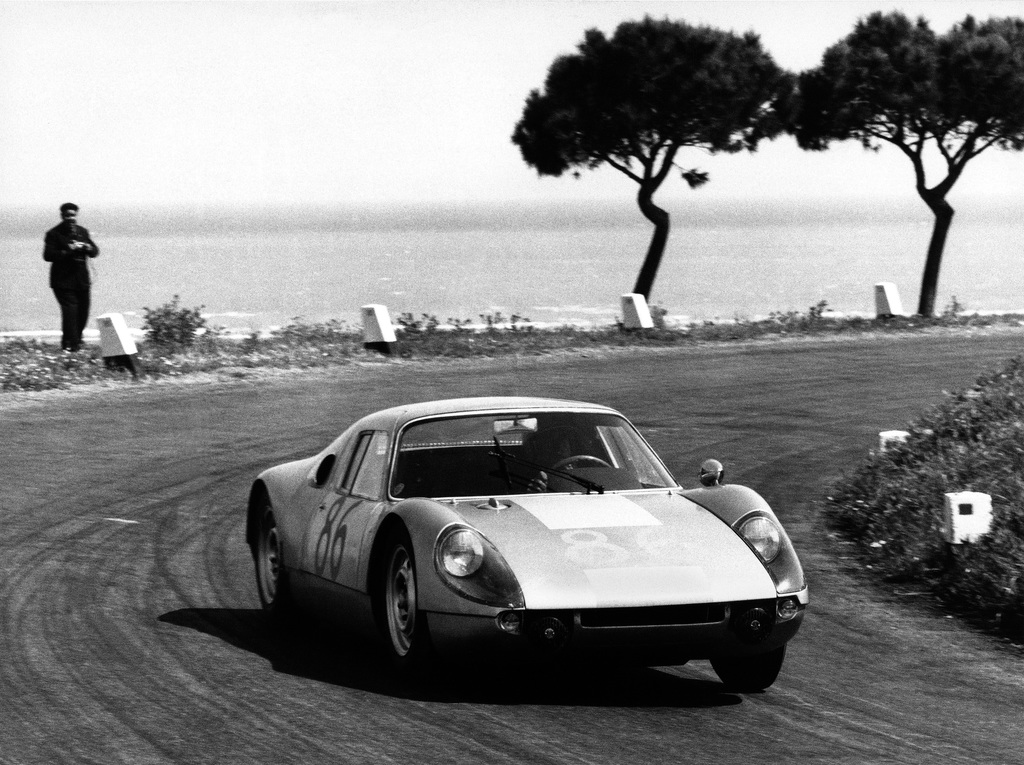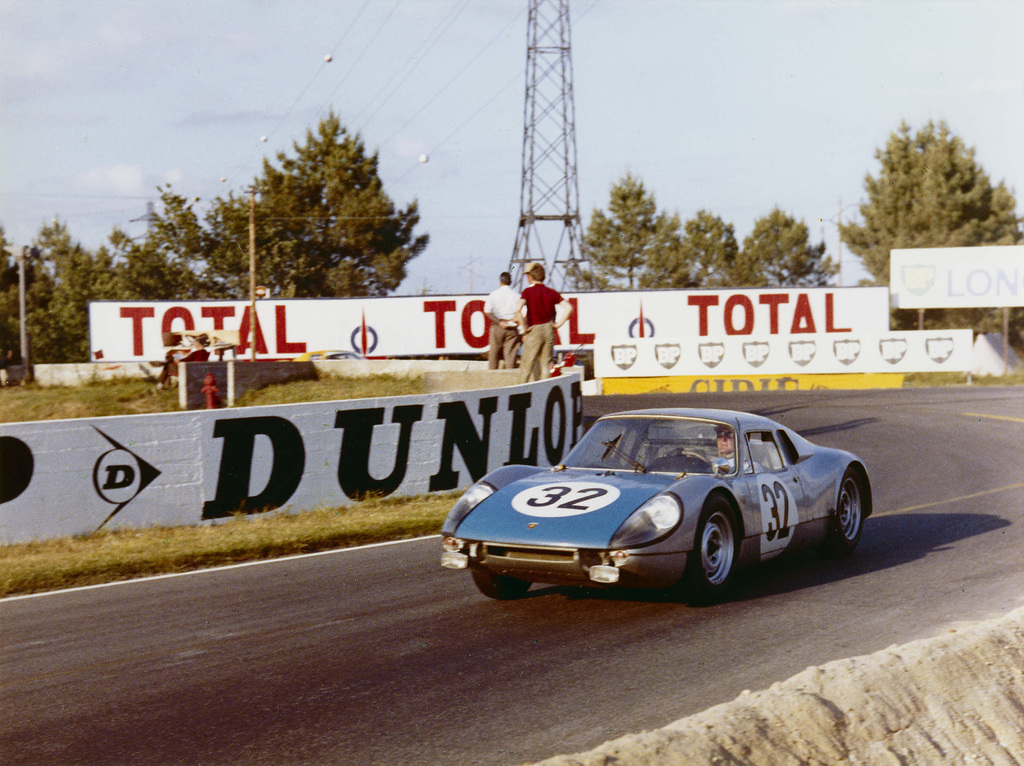1964 Porsche 904 Carrera GTS
As defined by the Federation Internationale de l’Automobile (FIA), a GT car is a ‘vehicle built in small series for customers who are looking for better performance and are not particularly concerned about economy’. The 904 is a racing car built to satisfy the FIA’s definition of a GT car.
Concept
Expertise gained while racing and developing the 550 and RSK Porsches laid the foundation for the 904. It was the familiar mid-engine layout which gave these early Porsches a distinct advantage. While many traditional people during the fifities, including Enzo Ferrari, remained skeptical of the mid-engined layout, both Cooper and Porsche paved the way for the mid-ship trend which continues today.
Motivation for the 904 project came after two fledging years of Porsche Grand Prix racing. After abandoning Grand Prix Racing in 1962, development was focused on sports car racing. Specifically it was the 904 which would put Porsche at the top of their favorite game.
As the FIA demanded one hundred examples had to be produced to meet homologation, the 904 was designed as a customer car with a full interior including a heater. This offering marked the first time a closed-top, mid-enigined Porsche was sold to the public.
Porsche’s First Plastic Body
Since the 904 was going to be a production car, the traditional space frame chassis and corresponding aluminum body would be too costly to manufacture. Such restrictions lead Porsche, with chassis designer Ing. Schroder into an entirely new approach.
Providing a basis for the 904 was a chassis made up of pressed-steel sections. On top of this chassis sat a unique fiber glass body shell which was bonded and bolted to the chassis. These construction techniques kept both costs and weight down which was essential for a production run of over 100 race cars.
Ferdinand Alexander Porsche, Ferry Porsche’s son was responsible for the styling of the 904. After completing the Formula 1 and RS61 projects, Ferdinand had the confidence to use a new styling language with the 904. His work produced a body which had a drag coefficient of .33 Cd.
Over 50 fiber glass pieces made up to the body of the 904. They were built and assembled by the Heinkel Aircraft Company. Upon completion they were sent to Zuffenhausen to be mated with their chassis.
With its fiber glass body, the Porsche 904 was the first of a long line of plastic-bodied race cars. Fiber glass offered many distinct advantages: it didn’t rust, was easily repairable, the molds were easily altered and most of all, it was lightweight.
Engines
Originally, the chassis of the 904 was designed to accept a number of engines and specifically the flat-6 from the upcoming 901 or 911 as we know it. Since the six-cylinder unit was developed to slowly, a revision of the type 587/2 engine found in the Abarth Carrera was chosen. This was Porsche’s most famous engine at the time, featuring all-alloy construction, two spark plugs per cylinder and over-head cam shafts.
Dipl.Ing. Hans Mezger and his team of engineers, massaged the 587/2 turned into the 587/3. Most importantly, they raised horsepower from 155 to 180 at 7200 rpm. Another modification included larger cylinder fining as cooling to the engine was primarily executed with these fins and the large oil cooler.
Optionally, Porsche offered the type 771 eight-cylinder engine with the 904. It was again a two-liter engine, but offered 210 horsepower.
Chassis
As mentioned before, the chassis of the 904 was built of pressed steel sections. At the basis of this structure were two long box-beams which ran the side of the car, tapering to bulkheads at both ends. Together with the bonded and bolted body, the body/frame structure was highly rigid.
Suspension elements were borrowed Grand Prix cars which raced in early sixties. Up front were double wishbones while the rear has unique twin diagonal arms guided by two longitudinal struts.
Outboard Porsche-ATE brakes were used all around. They were similar to the brakes on the 356-C which were manufactured in Germany under license from Girling. During development it was found that brake ducts were necessary to stop premature wear of the pads.
Racing
Since as many as one hundred and twenty 904s were sold to varying customers, the car competed in numerous hillclimbs, endurance races, sprints and rallies. The car would compete in the two-liter class against competition such as the Abarth Simca 2000 and Alfa Romeo Guila Tubolare Zagato.
As highlight to start of the 904’s race career, Baron Antonio Pucci and Colin Davis took the outright victory at 1963 Targa Florio. They drove a standard specification 904 against competition including Porsche eight-cylinder prototypes, Shelby Cobras and Ferraris.
During the rest of the 1964 season, Porsche continued a streak of reliability which enabled them to be unchallenged in their class. The two liter manufacturer’s championship was in Porsche’s hands.
For the 1965 season, Ferrari posed a major threat with the release of their Dino 166. To match the Ferrari, Porsche modified the 904 to include more horsepower, wider racing tires, larger brakes and lighter fiber glass. It is also worth mentioning that during the 1965 season a variety of engines were used in the car including the flat-eights and the flat-sixes.
Again, Porsche took the class wins at the majority of the 1965 events. During the races where the 1.6-liter Ferrari showed up, it was narrowly beaten by Porsche. The Dino 166 made it apparent that 904 was going to need replacement.
Conclusion
The 904 was a car built during the end of an era having affordable race cars. Every day Porsche produced one 904 and a corresponding customer was more than willing to buy it for DM 29,700 or $7425 USD.
Future plastic-bodied cars, beyond the 904, would soon become to advanced and expensive to sell as a production vehicles. Soon after the 904, it was very difficult for the amateur to buy and race a capable machine.
The 904 started a trend which would motivate Porsche to manufacture sports prototype cars.
Story by Richard Michael Owen
In Detail
| submitted by | Richard Owen |
| production | 120 |
| price $ | $7 425 USD |
| engine | Air Cooled, Type 587/3, All Aluminum, Flat 4 w/Dry Sump |
| position | Mid Longitudinal |
| aspiration | Natural |
| valvetrain | DOHC 2 Valves per Cyl |
| fuel feed | Twin Dual Throat Downdraft Webber 46 IDM2 Carburettors |
| displacement | 1966 cc / 120.0 in³ |
| bore | 92 mm / 3.62 in |
| stroke | 74 mm / 2.91 in |
| compression | 9.8:1 |
| power | 134.2 kw / 180 bhp @ 7200 rpm |
| specific output | 91.56 bhp per litre |
| bhp/weight | 281.25 bhp per tonne |
| torque | 195.92 nm / 144.5 ft lbs @ 5000 rpm |
| body / frame | Fibreglass over Box Section Steel Frame |
| driven wheels | RWD w/LSD |
| front tires | 550-15 |
| rear tires | 600-15 |
| front brakes | Discs |
| rear brakes | Discs |
| front wheels | F 38.1 x 15.2 cm / 15 x 6 in |
| rear wheels | R 38.1 x 15.2 cm / 15 x 6 in |
| steering | Rack & Pinion |
| f suspension | Wishbones w/Coil-over Telescopic Dampers |
| r suspension | Twin Diagonal Arms w/Longitudinal Struts, Coil-over Telescopic Dampers |
| curb weight | 640 kg / 1410 lbs |
| wheelbase | 2300 mm / 90.6 in |
| front track | 1314 mm / 51.73 in |
| rear track | 1312 mm / 51.65 in |
| length | 4090 mm / 161.02 in |
| width | 1540 mm / 60.62 in |
| height | 1065 mm / 41.93 in |
| transmission | 5-Speed Manual |
| gear ratios | 2.643:1, 1.550:1, 1.217:1, 1.040:1, 0.889:1 |
| top speed | ~262.3 kph / 163.0 mph |
| 0 – 60 mph | ~6.4 seconds |
| 0 – 100 mph | ~14.0 seconds |
Auction Sales History
1964 Porsche 904 Carrera GTS 904-026 – sold for €1,428,000 Recent complete restoration to exacting standards. Documented ownership and extensive successful competition history. Hugely eligible for leading historic motoring events and rallies. Auction Source: 2015 Paris by RM Auctions
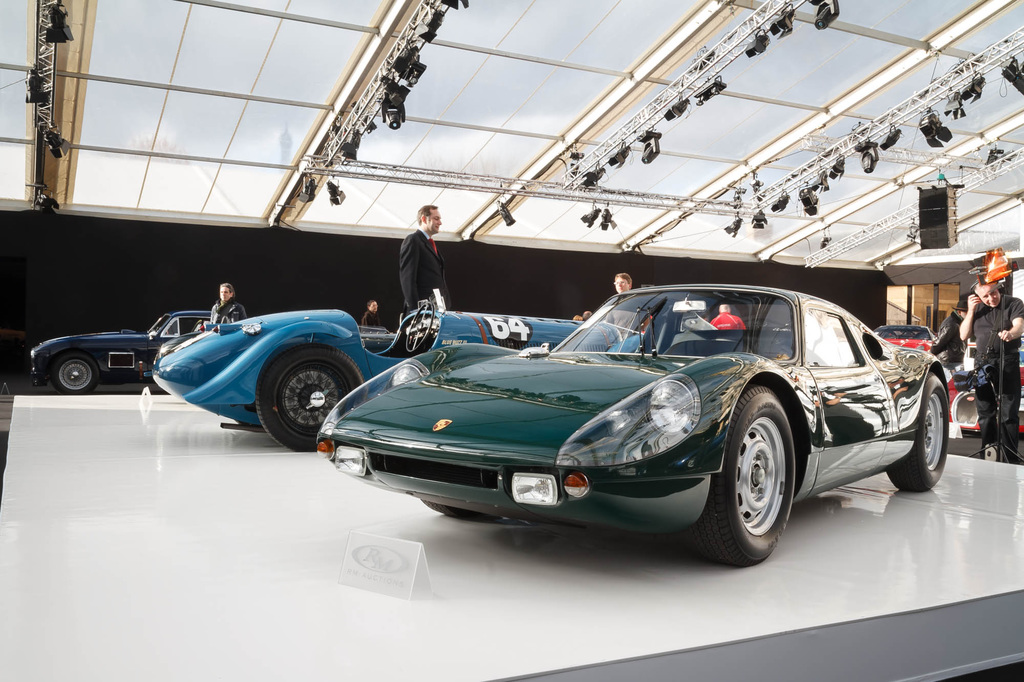
1964 Porsche 904 Carrera GTS 904-057 – sold for $1,595,000 The Ultimate Four-Cam, Four-Cylinder Porsche. Outstanding Spanish Racing History. Consistent Class and Overall Winner in Period. Well-Documented Provenance. Matching-Numbers Original Bodied Example. Believed to Be a 14,000-Mile Car. Presented in Original 1964 Livery. Offered with Extensive History File, Tool Kit , and Owner’s Manual. Perfect Candidate for Leading International Events. Documented by Porsche Historian Jürgen Barth. Auction Source: Gooding & Company’s 10th Anniversary 2013 Pebble Beach Auction

1964 Porsche 904 Carrera GTS 904-017 – sold for $1,045,000. Presented in 1964 USRRC Racing Livery. The Ultimate 4-Cam, 4-Cylinder Porsche. Outstanding West Coast Racing History. Successfully Competed in the Monterey Historics and the Tour Auto. Extensive Collection of Spares Including a Special, Peter Pohl Race-Spec Engine. Thoroughly Documented Provenance and History. Auction Source: 2011 Scottsdale Auction by Gooding & Company


